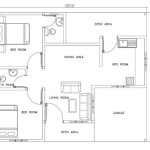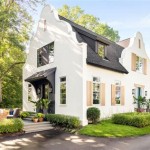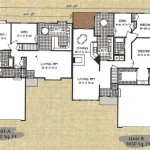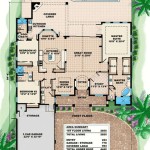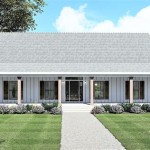Plants for the North Side of Your House in Minnesota
Minnesota homeowners often face the challenge of landscaping areas with limited sunlight, particularly the north side of a house. This area typically receives little to no direct sunlight, presenting unique considerations when selecting plants. Success hinges on understanding the specific conditions of the north side – cooler temperatures, potentially higher moisture levels due to less evaporation, and protection from harsh winds. Selecting plants adapted to these conditions is crucial for creating a thriving and visually appealing landscape.
The north side's microclimate differs significantly from sunnier areas. Consequently, plants that thrive in full sun will likely struggle and potentially perish on the north side. Understanding the amount of shade is the first step. Is it deep shade, where almost no direct sunlight reaches the area, or partial shade, where there might be dappled sunlight for a few hours throughout the day? This will significantly narrow down the options.
Understanding Shade Tolerance
The concept of shade tolerance is paramount when choosing plants for the north side of a house in Minnesota. Plants are categorized based on their sunlight requirements, typically ranging from full sun (6 or more hours of direct sunlight per day) to full shade (less than 3 hours of direct sunlight). Plants labeled as “shade-tolerant” or “partial shade” are the most suitable for north-facing areas. However, even within these categories, there's a spectrum of tolerance.
True shade-loving plants thrive in consistently low-light conditions. These plants often have adaptations such as larger leaves to capture more available light. Plants that tolerate partial shade can handle some direct sunlight, typically in the morning or late afternoon. It's important to research the specific light requirements of each plant being considered to ensure it will thrive in the anticipated conditions. The tag or label that comes with the plant will provide this information. Local nurseries specializing in native or regional plants are also excellent resources for guidance on species best suited to the specific yard's microclimates. Many online resources exist, but it's important to verify this information comes from universities, arboretums, or other reputable sources.
Soil conditions are also critical. The north side of a house may have different soil composition and drainage compared to other areas of the yard. Amending the soil with organic matter, such as compost, can improve drainage and provide essential nutrients for plant growth. A soil test from a local agricultural extension service can provide a more conclusive analysis and recommendations for amendment.
Recommended Plant Species for North-Facing Landscapes
Several plant species are well-suited for the north side of a house in Minnesota, considering the shade and potentially moist conditions. For ground cover, options include hostas, ferns, and pachysandra. Hostas are particularly popular due to their wide variety of leaf shapes, sizes, and colors. They are relatively easy to grow and provide excellent ground cover in shady areas. Regular watering during dry spells is essential for hostas to thrive. Remember that deer love hostas, so preventative measures might be necessary in areas with heavy deer populations.
Ferns are another excellent choice, bringing a textural element to the landscape. Many fern species are shade-tolerant and thrive in moist environments. Ostrich ferns and lady ferns are two common options that are winter hardy in Minnesota. Pachysandra is an evergreen ground cover that provides year-round interest. It spreads slowly and forms a dense mat, suppressing weeds and providing a consistent green carpet. However, pachysandra can be susceptible to certain diseases in overly wet conditions, so proper drainage is important.
For shrubs, consider rhododendrons, azaleas, and hydrangeas. While some varieties of rhododendrons and azaleas prefer acidic soil, certain cultivars are more adaptable to typical Minnesota soil conditions. Hydrangeas, particularly the *Hydrangea macrophylla* varieties, offer showy blooms in shades of pink, blue, or purple, depending on the soil pH. It is important to note that not all hydrangeas are hardy in Minnesota’s climate, so careful selection of cold-hardy varieties is critical. Consider varieties like 'Endless Summer' or 'Annabelle', which are known for their reliable blooming even after harsh winters. It is always recommended to research any hydrangeas before installing them to ensure they will thrive and produce flowers.
Other shrub options include viburnums and elderberries, which offer attractive foliage and berries. Many viburnum varieties are shade-tolerant and offer seasonal interest with their flowers, foliage, and berries. Elderberries are also shade-tolerant and produce edible berries that can be used for jams, jellies, and wines. Be certain to check the mature size of any shrub before planting it, as some varieties can grow quite large and may overwhelm a smaller space.
For flowering plants, consider impatiens, begonias, and astilbes. Impatiens are a classic choice for shady areas, providing continuous blooms throughout the summer. Begonias offer a wide variety of flower colors and foliage textures. Astilbes are known for their feathery plumes of flowers and thrive in moist, shady conditions. These perennials return year after year, offering lasting beauty to the landscape. Consider varieties that are native to the area to maximize success.
When selecting trees for the north side, consider smaller, shade-tolerant varieties such as Amur maples, serviceberries, or dogwoods. These trees provide visual interest without casting too much shade on the surrounding plants. It’s critical to ensure adequate space for the tree to mature, avoiding conflicts with the house or overhead power lines. Consulting with a certified arborist is recommended before planting any tree, particularly near structures or utilities.
Soil Preparation and Maintenance
Adequate soil preparation is essential for ensuring the successful establishment and growth of plants on the north side of a house. As previously mentioned, amending the soil with organic matter is crucial. Compost, well-rotted manure, or peat moss can improve drainage, aeration, and nutrient content. Before planting, thoroughly till the soil to a depth of at least 12 inches and incorporate the organic matter.
Maintaining proper soil moisture is also important. While the north side tends to retain moisture, it's still essential to monitor the soil and water plants during dry periods. Mulching around plants helps to retain moisture, suppress weeds, and regulate soil temperature. Use organic mulches such as shredded bark, wood chips, or pine needles. Avoid using inorganic mulches such as rocks or gravel, as these can heat up and damage plant roots.
Fertilizing plants on the north side is generally less frequent than in sunnier areas. Shade-tolerant plants typically require less fertilizer. However, it's still important to provide essential nutrients. A slow-release fertilizer applied in the spring can provide a steady supply of nutrients throughout the growing season. Avoid over-fertilizing, as this can lead to excessive foliage growth at the expense of flowering. A soil test can help determine the specific nutrient needs of the soil and guide fertilizer application.
Regular pruning is also important for maintaining the health and appearance of plants. Remove dead, diseased, or damaged branches to promote air circulation and prevent the spread of disease. Prune shrubs and trees according to their specific needs, typically in late winter or early spring. Deadheading spent flowers encourages continued blooming and prevents seed production. It is important to use sterilized and sharp tools when pruning to protect the plants from disease and minimize stress.
Finally, be vigilant about monitoring plants for pests and diseases. Shade-tolerant plants can be more susceptible to certain pests and diseases due to the higher humidity and lower light levels. Regularly inspect plants for signs of infestation or disease, such as yellowing leaves, spots, or unusual growth. Treat any problems promptly with appropriate measures, such as insecticidal soap or fungicide. Consider choosing disease-resistant varieties to minimize the risk of problems. Employing integrated pest management (IPM) strategies is recommended to minimize the use of chemicals and promote sustainable pest control.
:strip_icc()/101547399-c96b3a1acaea4c6ba170b79bf780c2cb.jpg?strip=all)
15 Tips For Shade Friendly Perennials From A Minnesota Gardener

12 Minnesota Native Plants For Your Home Landscapes My Park

12 Perfect Plants For East Facing Borders

9 Beautiful Plant Combinations For Shady Side Yards

10 Planting Ideas To Boost Your Garage S Curb Appeal
:strip_icc()/101547416-8248eb16b0934cb4b9eaa21f4bc42ca8.jpg?strip=all)
15 Tips For Shade Friendly Perennials From A Minnesota Gardener

Right Plant Place Why It Matters Davey Tree

Home Demonstration Garden Minnesota Landscape Arboretum

Don T Touch These 5 Dangerous Plants That Grow In Minnesota A Z Animals
:strip_icc()/101547394-fc58cf659f1b4c4191881ee61c4c65cb.jpg?strip=all)
15 Tips For Shade Friendly Perennials From A Minnesota Gardener


